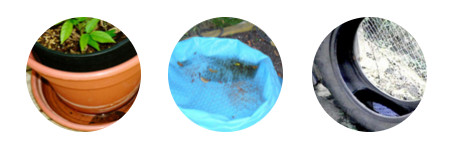


Update: As of September 29, 2015 a total of 478 Chikungunya virus cases were reported, from 38 different US states. All reported cases were from travelers returning from affected areas. There have been no known locally-transmitted cases reported this year. Between the Virgin Islands and Puerto Rico 116 cases have been reported this year. All were locally-transmitted. From 2010-2013 there were a few cases of locally-transmitted Chikungunya disease reported in the continental United States. Since Chikungunya’s initial appearance in the Americas, cases have been reported in over 44 countries and territories, with more than 1.2 million cases reported to the Pan American Health Organization.
Update: On September 23, 2015 the Center for Disease Control put Mexico on Watch Level 1 (Practice Usual Precautions) for Chikungunya. Beginning in October 2014 locally-transmitted cases have been reported throughout Mexico, meaning that the infected mosquitos are spreading Chikungunya to people. The CDC recommends people in the following high-risk groups talk with their health care provider before traveling to Mexico;
Update: On May 14, 2015 the Center for Disease Control put Central America, South America, and the Caribbean Islands on Watch Level 1 (Practice Usual Precautions) for Chikungunya. In June 2014 cases of Chikungunya were first reported in El Salvador. Since then, cases have been reported by other Central American countries. In December 2013, Saint Martin in the Caribbean Islands and French Guiana reported cases of Chikungunya. These were the first reported cases in the Americas.
Prevention:
There is currently no vaccine to prevent Chikungunya.

How can you reduce the chances that you will be bitten?
Tip: : If you are using sunscreen, apply the sunscreen first and the insect repellant second.
Important: If someone in your house has Dengue Fever, take special precautions to prevent mosquitos from biting them and then biting others in the house.
Symptoms:
Symptoms of Chikungunya usually begin to manifest 3-7 days after being bitten by an infected mosquito. Common symptoms include:
The disease does not often result in death, but some of the symptoms can become severe and disabling. Most people will begin to feel better after 1-2 weeks, while some people can have prolonged joint pain for several months. Once a person is infected they are likely protected from future infections.
Treatment:
To find out if you have Chikungunya you can get a blood test done. There is no medication to treat Chikungunya, and there are no effective medications to reduce the pain and swelling associated with it.
Common treatments include:
NOTE: Avoid using drugs with acetaminophen, Naproxen and aspirin.
Transmission:
Chikungunya is transmitted to people who have been bit by a mosquito that is infected with the Chikungunya virus. Mosquitos initially contract the Chikungunya virus by biting a person that is already infected with Chikungunya. Sometimes a person can have the Chikungunya virus in their blood and never show any symptoms. About one week after the mosquito becomes infected it can pass the virus on to other people.
Note: In very rare cases, Chikungunya can be transmitted through organ transplants or blood transfusions by an infected person. There has also been evidence of an infected mother transmitting the virus to her fetus.